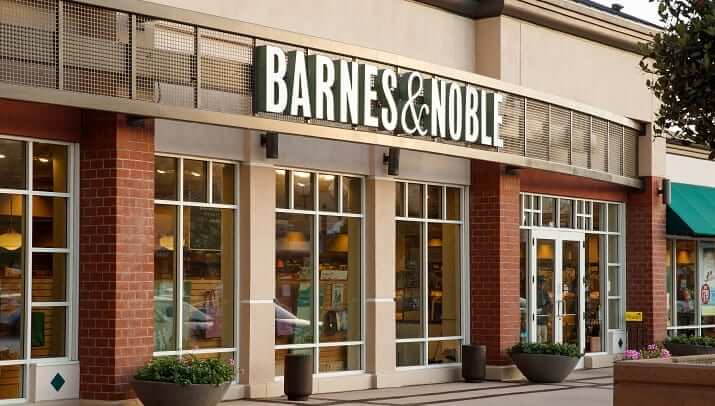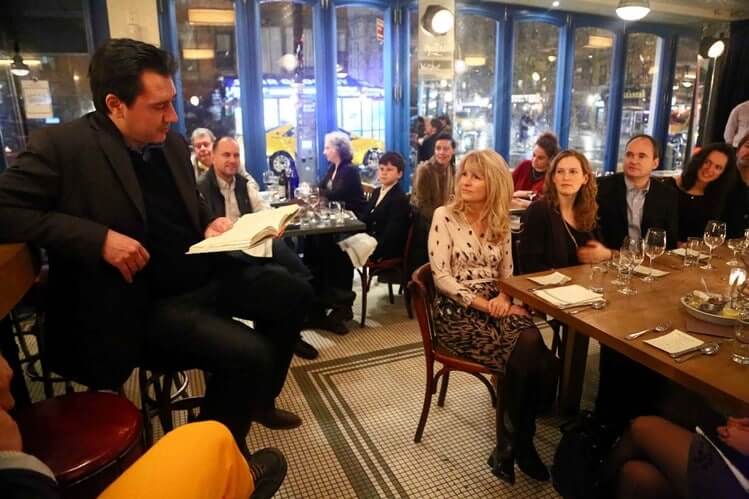
Barnes and Noble has had a revolving door of people who had the CEO position. In 2010, website president William Lynch was named CEO. He is credited with helping launch the company’s electronic book store and overseeing the introduction of its electronic book reader, the Nook. Many observers saw his appointment as underscoring the importance of digital books to Barnes & Noble’s future. Steve Riggio stayed on as vice chairman. When Lynch resigned in mid-2013 he was replaced by Chief Financial Officer Michael Huseby early the next year. Following the spinoff of Barnes & Noble Education, Huseby departed to head the new firm; his place was filled in mid-2015 by Ronald Boire, who departed one year later. Demos Parneros was named Barnes & Noble’s Chief Executive Officer in April 2017 after having joined the company as Chief Operating Officer in November 2016; however, he was fired in July 2018 for “company policy violations” without severance and was immediately removed from the company’s board, at the advice of a law firm hired by Barnes & Noble. Barnes and Noble was sold a few months ago and James Daunt is the new CEO. He is the only guy in the history of bookselling that is the CEO of two companies – Waterstones and B&N.
One of the big problems with a revolving door of chief executives is when they ascend to the highest position they often bring in a handpicked team of executives to head various department. This helps solidify their power and ensures that most people are loyal. This is normally not a problem with established companies, where a CEO is often there for 5-10 years, but Barnes and Noble is quite different. With so many different CEOS it has resulted in a bunch of executives overseeing ecommerce, Nook, merchandising, and publishing relations. Everyone who heads these divisions were brought in by former CEOS and outlived them and very often they have no bookselling experience. Daunt has realized this is a problem and has begun to clean house.
Tim Mantel, B&N’s chief merchandising officer, was let go last month, and longtime senior VP of corporate communications Mary Ellen Keating’s last day was September 13th. Daunt said in the seven years he has been running Waterstones, he has brought in only one outside person to the U.K. chain’s executive team. He wants to create a culture at B&N that will give employees career paths. “We have talent here,” he said.
Daunt made it clear his initial focus will be on improving B&N’s physical stores. “If you improve the stores, everything else will rise,” he said. He has no plans to discontinue the Nook line as long as the devices keep pace with the Kindle. As for BN.com, he believes its performance can be improved, in part, by improving the site’s content. He thinks B&N’s relatively new buy online and pick up in store program has the makings of a hit, noting that Waterstones’ similar program has been a great success, racking up annual growth rates between 30% and 40% over the past few years.
Daunt is aware the turnaround will take some time. At Waterstones, the first signs of improvement took about six months to appear, but, he observed, “B&N is a bigger business.” He said B&N’s progress can be rightfully assessed in the 2020 holiday season. “There are lots of details to get right,” he added.
With the 2019 holiday season around the corner, Daunt is realistic about the fact that not many changes can be made before the new year. “I would like to settle things down and maybe tweak the merchandising” between now and the end of the year, he said. He also knows that, in addition to time, improving B&N will require investment. B&N “won’t get turned around without spending money,” he noted. “The stores need love, and dollars.”
via Publishes Weekly
Michael Kozlowski is the editor-in-chief at Good e-Reader and has written about audiobooks and e-readers for the past fifteen years. Newspapers and websites such as the CBC, CNET, Engadget, Huffington Post and the New York Times have picked up his articles. He Lives in Vancouver, British Columbia, Canada.
